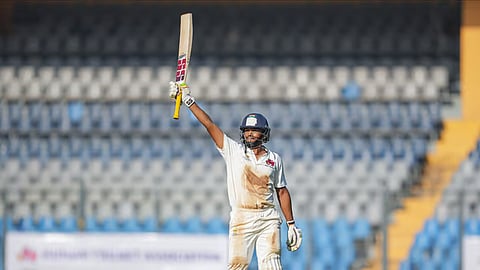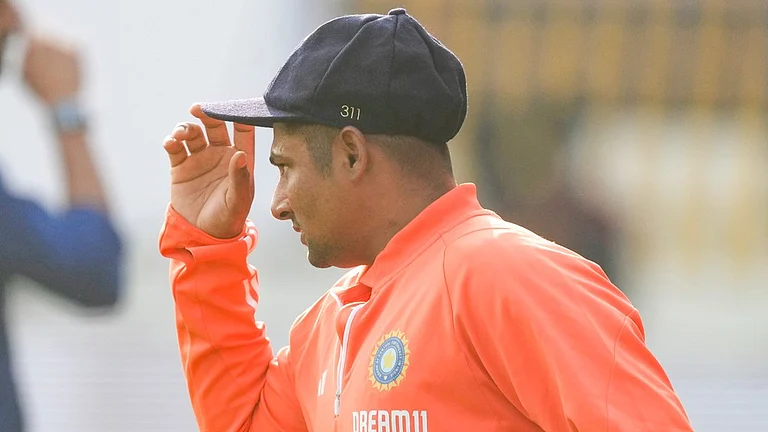The Ranji Trophy, India‘s iconic red-ball cricket championship, has a glorious heritage dating back 90 years. Bombay and Mumbai teams have remarkably won the trophy on nearly half of those occasions, bringing up an amazing 42nd title win after a gap of eight years. (More Cricket News)
Ranji Trophy: How Maidans Of Mumbai Continue To Shape Indian Cricket
Mumbai's 42nd Ranji Trophy title stands testimony to the age-old 'maidan cricket' culture that is intrinsic to the city. The hallowed grounds routinely throw up prolific batters who serve as the backbone of the Indian top-order
To put that number in its true perspective, the next best team is Karnataka, with eight wins.
And Mumbai did this without their star players Suryakumar Yadav, Rohit Sharma, Sarfaraz Khan and Yashasvi Jaiswal.
Skipper Ajinkya Rahane is no stranger to leading depleted sides to memorable victories. He did that famously with an injury-ridden Indian team in Australia in 2020-21. A team that had been bowled out for 36 in the first Test and had barely 11 players standing at the Gabba, in the decider.
History remembers that Rahane inspired his team of rookies to one of the greatest wins in Test match history, breaching an impregnable fortress for visiting teams.
So he was right at home in the present situation, and marshalled his resources with the same calmness under pressure, as Vidarbha drew closer to an improbable 500-plus fourth innings victory target.

Over the years, Mumbai’s top batters have formed the backbone of the Indian batting order in Test cricket. In the 1980s they had Dilip Vengsarkar, Sunil Gavaskar, Ravi Shastri and Sandeep Patil at the top of the order and before that, in the 70s they had Sunil Gavaskar, Dilip Sardesai, Ajit Wadekar and Ashok Mankad in 1971.
This tradition has continued, with the exception of a small period in the 1990s and early 2000s when Sachin Tendulkar and Sanjay Manjrekar were the only batting representative from Mumbai, and today we again have Rohit Sharma, Yashasvi Jaiswal, Shreyas Iyer and Sarfaraz Khan in the top six of the Indian batting order.
When it comes to winning the Ranji Trophy, however, Mumbai have always had a tradition of the lesser-known players stepping up and taking charge when the big names were away on national duty, or out of sorts.
And it was no different this time.
Products of a proud, decades-old lineage that traces its roots back to the iconic Azad Maidan with its 22 pitches, where simultaneous school and club matches - including the Harris Shield inter-school tournament - are played within the confines of a single, large ground. The boundary of one game often extends into that of the other, and the point fielder of one game stands next to the square leg fielder of the adjacent game, both guarding almost the same stretch of turf.
And many a times, a young batter who has got out in one game rushes to pad up again and goes out to bat in an adjacent game.
This has been the norm for young cricketers growing up in the maidans of Mumbai, where there is never a dearth of cricketing talent, and the competition for places even at the school and club levels is fierce.
It takes a special type of mental toughness to thrive here and make your way up through the crowded ranks of talented youngsters vying for a place, and catch the attention of selectors and talent scouts.
This mental toughness has shown up in a plethora of mammoth individual scores and batting records created by 13 and 14-year olds at school level, which over the years, has included the likes of Sunil Gavaskar, Sachin Tendulkar, Vinod Kambli, Prithvi Shaw and Sarfaraz Khan, to name just a few.
They have all made massive scores in the Harris Shield, growing up.
Their dogged tenacity and refusal to get out from an early age has been the fundamental mantra of the so-called ‘Bombay school of batting’ that describes a tradition and style of play, built on the foundations of a strong defence, fierce concentration, and an ability to bat for long periods.
And most importantly, a hatred for giving away one’s wicket.
This tradition has given the country some of its biggest names at the top of the order, and shown up most prominently in Mumbai‘s 42 Ranji Trophy title wins. It was perhaps best exemplified in the latest edition of the venerable old tournament, with the remarkable record of Mumbai’s numbers 10 and 11 both scoring hundreds in a last wicket 232-run partnership against Baroda in the quarter-finals.
Long years ago on the 1946 tour of England, Shute Banerjee and Chandu Sarwate had done that for India in a tour game against Surrey, for the first time.
There was a time when the Bombay Ranji Trophy team was an institution in itself and visiting teams often found it a tougher opponent than the Indian team. Although that has changed over the years, this win would feel all the more special for Mumbai because they had to wait eight long years for it, and did not come easy.
Skipper Ajinkya Rahane, though not at his best with the bat for the most part, and head coach Omkar Salvi guided them to it. They did it slowly but surely, with great commitment and purpose, with Rahane coming into his own in the second innings of the final with a fluent 73.
With a surfeit of big names available, it is not easy for someone who hasn’t played much first class cricket to command respect in Mumbai cricket. So Salvi, who has played just a solitary Ranji Trophy game for Railways, was always going to be on a difficult wicket in his role as head coach. But the players knew what he brings to the table and had been clamouring for him for the last few years, having recommended his name for that position.
Salvi, of course, had previously been with the Mumbai side as the bowling coach for four seasons, and had also been the assistant bowling coach at Kolkata Knight Riders in the Indian Premier League.
The current crop of Mumbai players felt that he understood their strengths and weaknesses well, having seen their ups and downs while working with three previous Mumbai head coaches – Pravin Amre, Chandrakant Pandit and Sameer Dighe - and placed their trust in him.
Traditionally, the Mumbai team with its embarrassment of riches in terms of former India players available for coaching duties, has always had big names as its head coaches. In a significant deviation from that tradition, Salvi was drafted in by the Mumbai Cricket Association in May last year.
And the journey to their 42nd Ranji Trophy title began from there.
When Mumbai didn’t do well in the white-ball championships, losing in the quarter-finals this season, the kid gloves were off and the daggers were out for Salvi. But he and Ajinkya Rahane had forged a strong alliance by then, and knew and understood the capabilities of each player. They assigned each one of them specific roles and gave them the freedom to fulfil these in match situations.
This brought the team together with hitherto not-so-well known players rising to the occasion in times of need. A classic case was that of the talented 19-year-old, Musheer Khan, just back from his exploits at the ICC Under-19 World Cup in Australia.
Following in the footsteps of his illustrious elder brother Sarfaraz, Musheer slammed a magnificent double century in the quarter-final against Baroda, and backed it up with a crucial fifty against Tamil Nadu in the semi-final and a magnificent hundred in the final. Like his elder brother, he averaged more than 100 in the Ranji Trophy this season, and must surely be another future India star in the making.

Drawing out the best from his players, Salvi proved yet again that playing and coaching are two separate occupations, distinct in the ingredients needed to succeed in each. Too often it is assumed that a great player would automatically make a great coach.
Too often, that assumption has been proved wrong in the annals of sport, worldwide.
Salvi’s success is the latest blow against this myth, a validation for all coaches working with elite teams, who have not played the sport at a high level themselves. He has proved yet again that it is not necessary to be a great player to be a good coach.
And that inspiring a team, bringing it together and backing the players is far more important.
“What we did differently is that for the first time we had a long pre-season camp at Alur in Bangalore with 20-25 players, where we got to know them – not just their games but also their personalities. It helped us to gel with them and understand their style of play. We had another camp in Mumbai and then played the Buchi Babu tournament where we got to see them in match situations. For us, U-23 cricket was the supply chain and the club matches watched by the selectors,” Salvi says, explaining their preparation for the tournament.
As many as 22 players, or the equivalent of two whole playing XIs, played in the various matches this time in Mumbai’s winning campaign.
And skipper Ajinkya Rahane adds, “We focused on fitness, creating a team culture and giving freedom to players on and off the field.”
All of that paid off, big time.
And for the Ajinkya and Salvi winning combination, this victory would have brought a lot of well-earned, well-deserved personal satisfaction.
The views and opinions expressed are those of the author. The author is a veteran Wing Commander of the Indian Air Force, who has played Ranji Trophy for Services.

